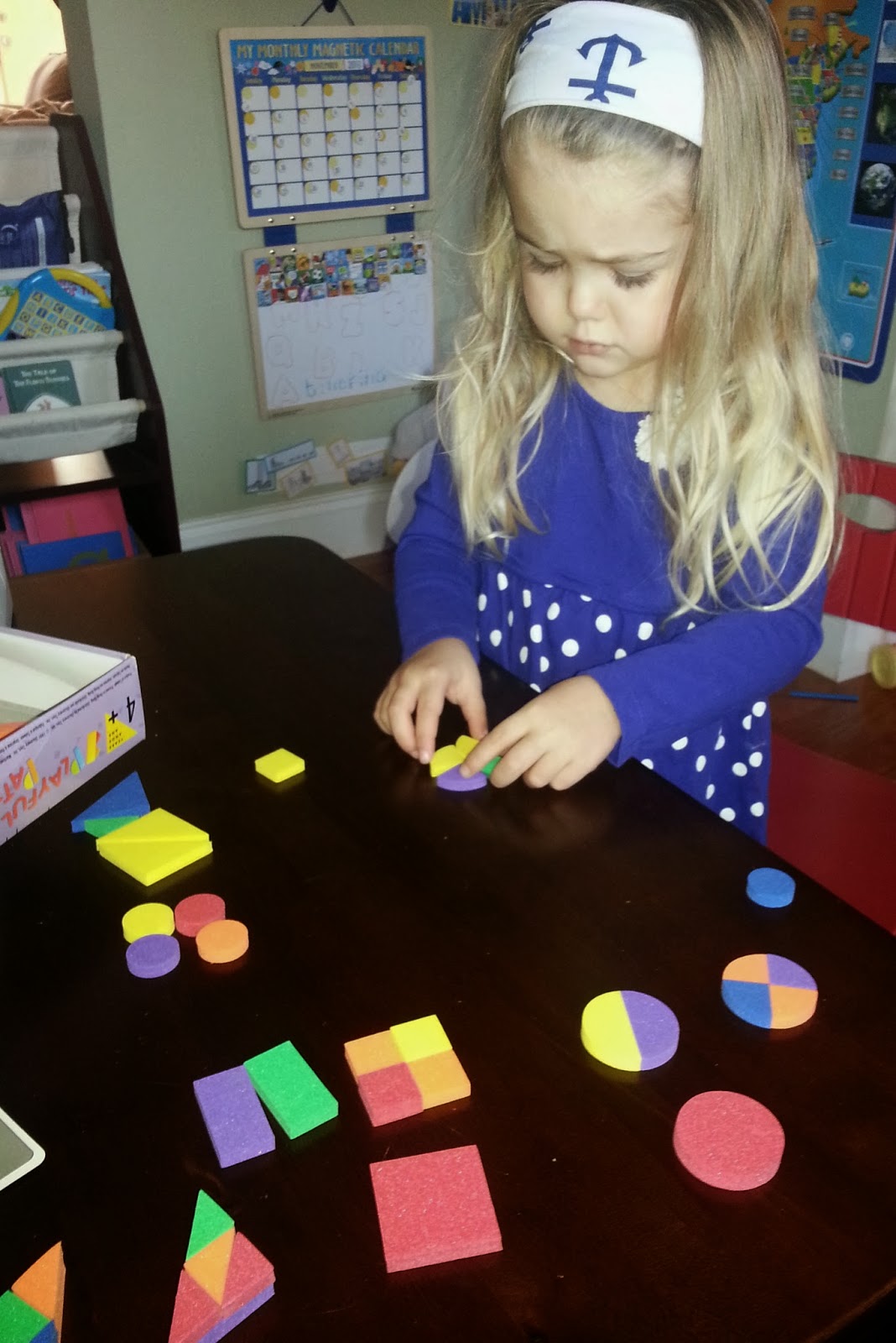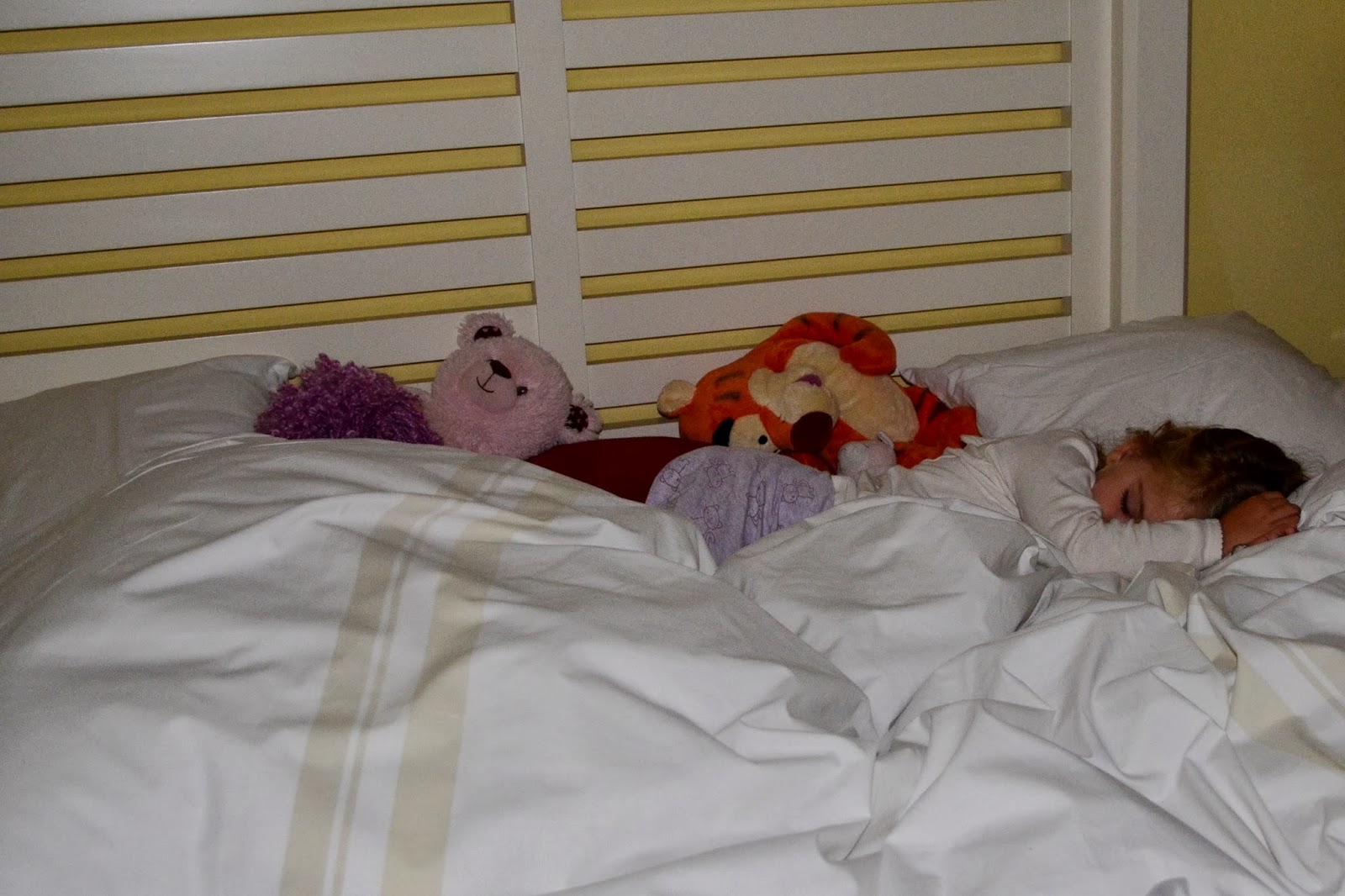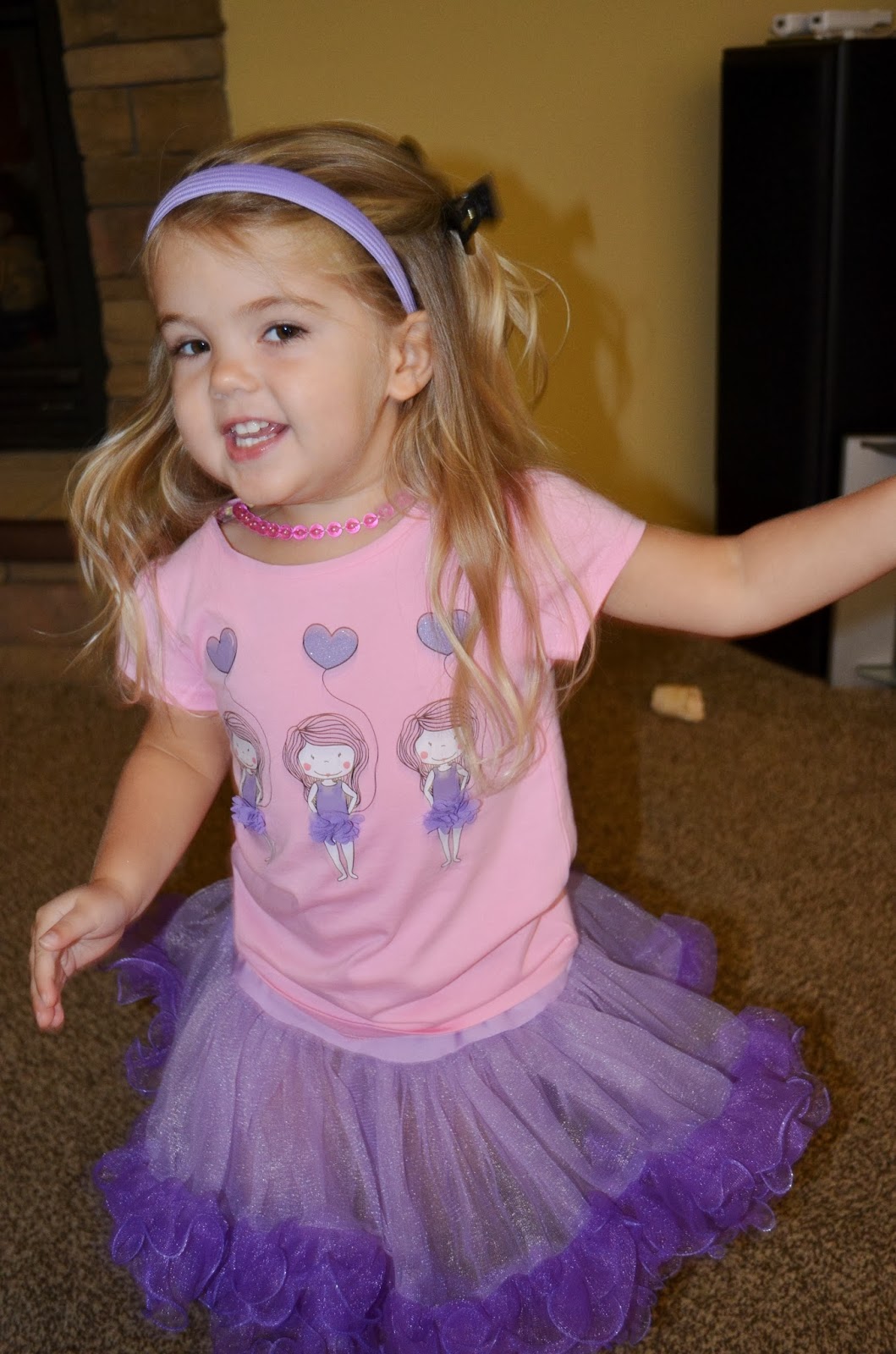The Montessori mathematics materials are typically not used until around age four. According to the Montessori Primary Guide, "Arithmetic deals with shape, space, numbers, and their relationships and attributes by the use of numbers and symbols. It is a study of the science of pattern and includes patterns of all kinds, such as numerical patterns, abstract patterns, patterns of shape and motion." I think the Golden Beads are really neat, but cost to purchase or the time required to make a set is a little overwhelming. At this point, we are focusing on basic math lessons that can be learned with existing materials.
Counting
We count things all the time - M does it naturally now. I was excited when we visited the Christmas display for the new train museum and they gave us a scavenger hunt that included counting the number of trains on the display. They also had characters from the Ruldolph movie and Charlie Brown hidden throughout the display for us to find.Number Recognition
Our advent calendar has been a big help with number recognition this month. Puck, our elf, filled the advent calendar with candy, stickers, stamps and other small treats for us to enjoy each day as we count down to Christmas. The numbers on our calendar do not go in order, so M helps me find the number that corresponds to the date each morning. She can recognize most of the numbers up to 10 now, and I help her with larger numbers by telling her the combination of numerals to look for (so for the 19th I'll tell her to look for a one and a nine together).I think this will lead us into more calendar activities at the start of the New Year. We started doing some basic review of the days of the week and months of the year, as well as putting the numbers on her magnetic calendar, but that kind of tapered off. I'd like to get back into that in January when we start some more structured activities as well.
Comparing Quantities (more/less)
We volunteer with a local middle school robotics team once a week. Since I taught high school engineering classes, I am familiar with how to program the robots and can help the students write code to control their robots. We recently attended the team's first competition, and M had a lot of fun watching the robots compete. Each competition involves a "game" in which the students compete in teams to score points. In this game, the students had to use their robots to move different colored balls around the field to score points. Different zones on the field were worth different numbers of points, and the larger balls scored more points than the smaller balls. (If you're interested, you can see the full game rules here.)Aside from the fact that she was being exposed to robotics, team competition, construction, and computer programming, she also learned more directly about comparing quantities through the scoring system. At the end of each match we would count the number of balls of each color that landed in the highest scoring zone to figure out which team scored more points. We also talked about how the larger balls were worth more points than the smaller balls.
In addition, the competition was set up as a tournament. The teams played preliminary matches in the morning and their record determined their ranking for the elimination portion of the competition. They had a screen that showed the current rankings as the competition progressed, and we talked about which team was in first place, second place, and so on.
Obviously not everyone is involved in robotics competitions (although you could be!), but the same concepts could be discussed at almost any sporting event or competition. For example, you could easily discuss how football or basketball teams score points, and how they can score more or less points depending on the situation. Just looking at the score of a game to compare which team scored more points would help with number comparisons.
Shapes
M knows the names of most common shapes, and likes to find examples of different shapes when we are out. They have a neat Clifford exhibit at the Children's Museum right now that includes this dog house shape sorter.Here is one of M's favorite games when we are walking downtown - jump on the shapes! She jumped on this row of circles (while I counted) over and over and over. She even received applause from a group of passersby who told her she was "the best jumper they'd ever seen." Wow!
Measurement
M is a big fan of measuring things. She has her own tape measure that she uses quite a bit, and she also likes to help with measuring cups and spoons while we cook. I bought a postal scale about a year ago so I could weigh and mail packages from home, and M likes to compare the weight of different objects when I leave it out. I like to look at the numbers (weights) with her to compare which number is bigger, and then also have her hold the objects in her hands to feel which object is heavier or lighter.Patterns
M is really interested in patterns right now. I made these pattern cards that correspond with her toy cars (I originally made a set as part of a friend's birthday box). This is more of a matching game, but it helps her to practice colors, attention to detail, and checking her work.We also received this set of foam pattern blocks and cards from M's grandma. She likes finding the matching shapes to create the images on the pattern cards, but really likes just playing around with the different shapes and making her own designs.
We use stamps (below) and stickers to create simple patterns on paper. Sometimes I will start a pattern and see if M can finish it. Other times we will work together to create a pattern. For example, I will take a blue stamp and she takes a green stamp. I will stamp once, then she stamps twice, then we repeat to create the pattern. She seems to understand this idea of "taking turns" to create a repetitive pattern.
Fractions
We have been using the new pattern blocks to talk about fractions. M likes to use the smaller pattern blocks to make larger shapes. We talked about all of the different ways we could make circles or triangles or squares, and how they used different numbers of parts but all created a final "whole" of the same size. One whole square, two rectangles (halves), or four small squares (quarters) are all equal to each other. This is an easy way to introduce basic fractions in a very visual, hands-on way.Find more ideas for Unplanned Math Activities here, and don't forget to check out the rest of the Simplify Preschool Series!



























































